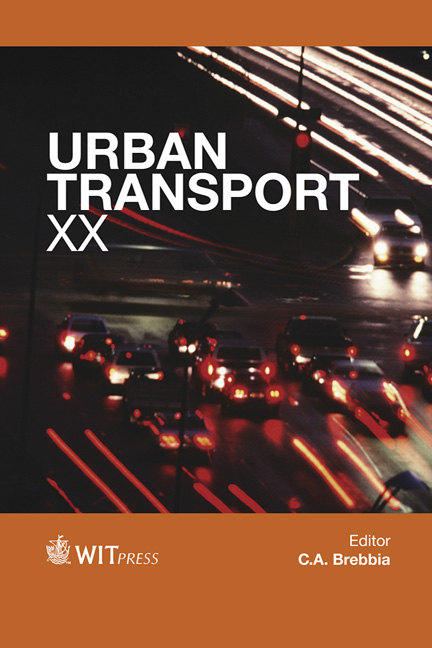Utilization Of The Spare Capacity Of Exclusive Bus Lanes Based On A Dynamic Allocation Strategy
Price
Free (open access)
Transaction
Volume
138
Pages
6
Published
2014
Size
309 kb
Paper DOI
10.2495/UT140151
Copyright
WIT Press
Author(s)
X. Wang & Q. Li
Abstract
Under the unbalanced allocation of road recourses between bus lanes and adjacent lanes, this paper primarily focuses on the utilization of spare capacity of exclusive bus lanes by automobiles during peak hours and aims at alleviating traffic jams and balancing road resources under the premise of the principle of public transportation priority. It is operated by the traffic control centre, which is responsible for dynamically declaring information and adjusting the dynamic bus lanes. The vehicles qualified to the utilization of bus lanes should meet the requirement that no malignant or illegal incidents happened during the past year. Actually, during the operation, only high-occupancy vehicles with more than three passengers can be allowed to enter into the bus lanes. In addition, it is tightly regarded as compensation to the vehicles limited by the tail number limitation strategy in Hangzhou. As a result, nearly 20 percent of vehicles are qualified to use the spare capacity of bus lanes and more than 5 percent of traffic volume is expected to increase during peak hours with the guarantee of the service level of exclusive bus lanes, and it is found that nearly 87.5% of car drivers accept this strategy.
Keywords
exclusive bus lane, dynamic allocation, priority of public transportation, spare capacity, high-occupancy vehicle.





